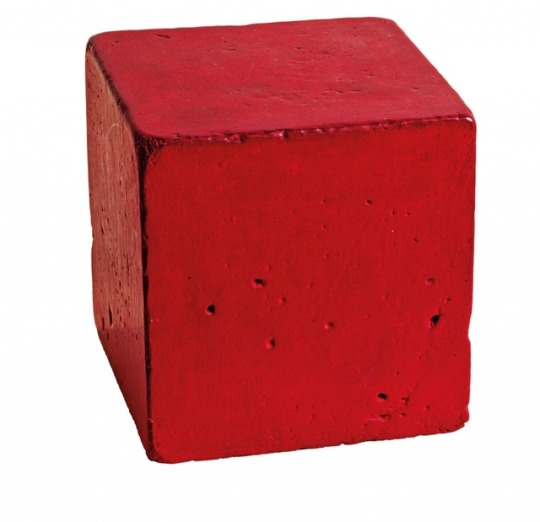#lamerican concretism
Photo

Lolo Soldevilla (Cuban, 1901-1971)
Sin título (Untitled), c. 1960
Courtesy David Zwirner, New York/London
© Haus der Kunst Concrete Visions
#lolo soldevilla#cuban art#latin american art#loló soldevilla#concretism#concrete art#cuban painter#abstract painting#lamerican concretism#haus der kunst#mu art#mu
2 notes
·
View notes
Photo

Tomas Maldonado (Argentinian, b.1922)
Tema sobre rojo, 1953
Oil on canvas, 99.5 x100cm
Private collection.
http://benshimolart.com/arte-abstracto/luis-benshimol-tomas-maldonado
#tomas maldonado#argentine art#tomás maldonado#concrete art#abstract art#latin american art#concretism#argentinian art#art#latino art#lamerican concretism#abstract painting#mu art#mu
8 notes
·
View notes
Photo

Aluísio Carvão (Brazilian, 1920–2001)
Cubocor (Color Cube), 1960
Pigment and oil on cement, 16.5 × 16.5 × 16.5 cm
Private Collection, Rio de Janeiro
© Haus der Kunst, Munich, Germany
Cubocor is the color red cast into a cube. Color as sculpture became an object for the viewer to confront, rather than merely the artist’s expressionistic tool. In this way Carvão integrated sculpture into its surrounding space, thereby creating an encounter with the viewer.
Aluísio Carvão, a founding member of the Rio de Janeiro–based neo-concrete group, wanted to involve the viewer in the work of art by having the object share space with its audience. The viewer was invited to have an individual response to the work. Concrete art, by contrast, assumed a general, universal, and rational audience whose experience was based on passive gazing. Carvão, like other neo-concretists, would go on to explore kinetic and auditory aspects of art via unconventional materials like nails, string, and bottle caps.
From 1957 to 1960, Carvão developed his “Cromáticas” (Cromatics), a series of paintings without frames. By removing these boundaries, Carvão reimagined the relationship of painting to wall as one of exchange, whereas his earlier concrete paintings explored geometric and color relationships within the defined space of the canvas. In 1960, Carvão shifted from painting to sculpture, as he was increasingly unsatisfied with the capacity of concrete painting to fully express the experience of color as a thing in itself.
#aluisio carvao#brazilian art#aluísio carvão#latin american art#neo concrete movement#art#sculpture#lamerican concretism#lamerican artinfo#mu art#mu sculp#mu#haus der kunst
3 notes
·
View notes
Photo

Carmelo Arden Quin (Uruguayan, 1913 – 2010)
Creanon Il, 1972
Acrylic on Canvas, 81 × 65 cm
Durban Segnini Gallery
...By late 1946 Arden Quin was in Paris , turning out work after work in his new shapes and curves. He experimented with many different color combinations and also made wooden movable pieces. In the 1950’s he created mobiles and works on highly polished enameled wood he called plastiqu blanche. The first major retrospective of his work was shown at Alexandre LaSalle’s Saint-Paul-de-Vence gallery. In the 1960’s he produced mobiles, and in the 1970’s he continued his experiments with the “H” form and now curved his work surface in two directions. In the 1980’s he did many coplanals, which involved more than one piece of work of art, sometimes attached, sometimes not, and sometimes movable.
Italia is an example of this. In the 1990’s Arden Quin was included in the MOMA exhibit of “Latin American Artists of the twentieth Century” and was named on the 50 most important artists of our time by an international critic review board assembled to select art for the Olympics in Seoul and Barcelona.
http://www.geometricmadimuseum.org/portfolio-item/arden-quin/
more info http://biennaleparalleles.blogspot.com/p/madi.html
#carmelo arden quin#concrete art#uruguayan art#art#concretism#latin american art#latino art#abstract painting#madi art#lamerican abstraction#lamerican artinfo#mu art#mu#abstract info
0 notes